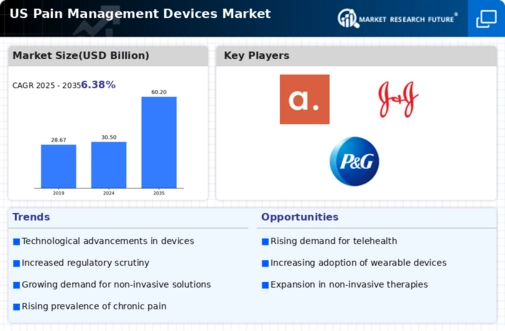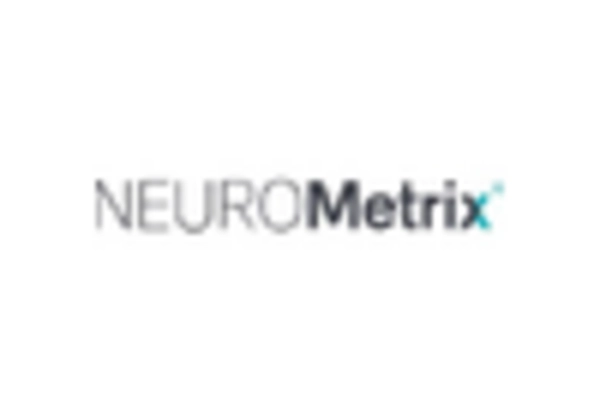Rising Prevalence of Chronic Pain
The increasing prevalence of chronic pain conditions in the US is a primary driver for the pain management-devices market. According to the National Institutes of Health, approximately 20.4% of adults in the US experience chronic pain, which translates to over 50 million individuals. This growing patient population necessitates effective pain management solutions, thereby propelling demand for innovative devices. As healthcare providers seek to address this issue, the pain management-devices market is likely to expand significantly. Furthermore, the economic burden associated with chronic pain, estimated at $635 billion annually, underscores the urgency for effective pain management strategies. Consequently, the pain management-devices market is positioned to benefit from this rising demand as patients and healthcare systems alike prioritize effective pain relief solutions.
Technological Innovations in Device Design
Technological innovations play a crucial role in shaping the pain management-devices market. Advancements in materials science, miniaturization, and smart technology integration have led to the development of more effective and user-friendly devices. For instance, wearable pain management devices that utilize transcutaneous electrical nerve stimulation (TENS) technology are gaining traction. These devices not only provide pain relief but also offer real-time data tracking, enhancing patient engagement. The market for such innovative devices is projected to grow at a CAGR of 8.5% from 2025 to 2030, indicating a robust demand for technologically advanced solutions. As manufacturers continue to invest in research and development, the pain management-devices market is expected to witness a surge in new product offerings, catering to diverse patient needs.
Aging Population and Associated Pain Conditions
The aging population in the US is a significant driver of the pain management-devices market. As individuals age, they are more susceptible to chronic pain conditions such as arthritis, neuropathy, and musculoskeletal disorders. The US Census Bureau projects that by 2030, approximately 20% of the population will be aged 65 and older, leading to an increased demand for effective pain management solutions. This demographic shift is likely to result in a higher prevalence of pain-related issues, thereby driving the need for advanced pain management devices. The pain management-devices market is expected to respond to this trend by offering tailored solutions that cater to the unique needs of older adults, ensuring effective pain relief and improved quality of life.
Increased Focus on Non-Pharmacological Treatments
There is a growing emphasis on non-pharmacological treatments for pain management, which is significantly influencing the pain management-devices market. With rising concerns over opioid dependency and side effects associated with pharmacological treatments, healthcare providers are increasingly recommending alternative therapies. Devices such as bioelectrical stimulators and acupuncture needles are gaining popularity as effective pain relief options. The market for non-invasive pain management devices is projected to reach $4 billion by 2027, reflecting a shift in treatment paradigms. This trend suggests that patients are seeking safer, non-drug-based solutions, thereby driving the demand for innovative devices in the pain management-devices market. As awareness of these alternatives grows, the market is likely to expand further, offering a variety of options for pain relief.
Growing Awareness and Education on Pain Management
Increasing awareness and education regarding pain management options are pivotal in shaping the pain management-devices market. Healthcare professionals and patients alike are becoming more informed about the various devices available for pain relief. Initiatives by organizations and healthcare providers to educate patients on the benefits of using pain management devices are contributing to market growth. For instance, community workshops and online resources are helping to demystify the use of these devices, leading to higher adoption rates. As awareness continues to rise, the pain management-devices market is likely to experience a surge in demand, as patients seek effective solutions to manage their pain. This trend indicates a positive outlook for the market, as informed patients are more likely to explore and utilize available pain management technologies.

















Leave a Comment